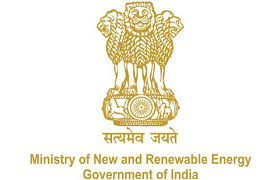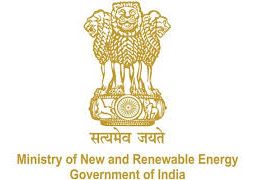
In Short : The PM KUSUM (Pradhan Mantri Kisan Urja Suraksha evam Utthan Mahabhiyan) Scheme has seen progress in its implementation. This initiative, aimed at promoting solar energy in agriculture, has witnessed advancements in on-the-ground projects, fostering sustainable energy practices and rural development.
In Detail : The Union Minister for New & Renewable Energy and Power has informed that the main objectives of the Pradhan Mantri Kisan Urja Suraksha evam Utthaan Mahabhiyan (PM-KUSUM) include de-dieselisation of the farm sector, providing water and energy security to farmers, increasing the income of farmers, and curbing environmental pollution. The Scheme has three components targeted to achieve solar power capacity addition of 34.8 GW by 31.3.2026 with total central financial support of Rs. 34,422 Cr.
The other salient features of the Scheme are given below.
Other salient features of PM- KUSUM Scheme
| Components, Targets & Criteria | Financial Assistance available |
| The Scheme is demand driven and open for all farmers of the country for implementation as per guidelines issued for the Scheme
Component A: Setting up of 10,000 MW of Decentralized Ground/Stilt Mounted Solar Power Plants on barren/fallow/pasture/marshy/ cultivable land of farmers. Such plants can be installed by individual farmer, Solar Power Developer, Cooperatives, Panchayats and Farmers Producer Organisations. Component B: Installation of 14 Lakh Stand-alone Solar Pumps in off-grid areas. Component C: Solarisation of 35 Lakh Grid Connected Agriculture Pumps through (i) Individual Pump Solarisation and (ii) Feeder Level Solarisation.
The beneficiaries under Component-B and Component-C could be individual farmer, Water User Associations, Primary Agriculture Credit Societies and Communities/Cluster Based Irrigation Systems.
|
Procurement Based Incentive (PBI) to the DISCOMs @ 40 paise/kWh or Rs.6.60 lakhs/MW/year, whichever is lower, for buying solar/ other renewable power under this scheme. The PBI is given to the DISCOMs for a period of five years from the Commercial Operation Date of the plant. Therefore, the total PBI payable to DISCOMs is Rs. 33 Lakh per MW.
For Component-B and individual pump solarisation under Component-C: CFA of 30% of the benchmark cost issued by MNRE or the prices of the systems discovered in the tender, whichever is lower is provided. However, in North Eastern States including Sikkim, Jammu & Kashmir, Ladakh, Himachal Pradesh and Uttarakhand, Lakshadweep and A&N Islands, CFA of 50% of the benchmark cost issued by MNRE or the prices of the systems discovered in the tender, whichever is lower, is provided. In addition, the respective state/UT has to provide at least 30% financial support. Balance cost is to be contributed by beneficiary. Component B and Component C (IPS) of PM KUSUM scheme can also be implemented without State share of 30%. The Central Financial Assistance will continue to remain 30% and rest 70% will be borne by the farmer. For agriculture feeder solarization, CFA of Rs 1.05 Crore per MW is provided. There is no mandatory requirement of financial support from participating State/UT. The feeder solarisation can be implemented in CAPEX or RESCO mode. |
State wise targets or fund allocation is not made under PM-KUSUM as it is a demand driven scheme. Further, the funds are released to States/UTs on achieving certain milestones. Based on the demand received from the State of Rajasthan and progress made under the PM-KUSUM Scheme, as on date, the Ministry of New & Renewable Energy has released Rs. 534.55 Crores to the State Implementing Agencies of the State of Rajasthan.
State/UT wise solar pumps allocated and installations achieved so far are furnished below.
| S. No. | State | Component-A (MW) | Component-B (Nos) | Component-C (Nos) | ||||||
| Sanctioned | Installed | Sanctioned | Installed | Sanctioned (IPS) | Sanctioned (FLS) | Installed | ||||
| 1 | Arunachal Pradesh | 2 | 0 | 400 | 199 | 0 | 0 | 0 | ||
| 2 | Assam | 10 | 0 | 4000 | 0 | 1000 | 0 | 0 | ||
| 3 | Chhattisgarh | 30 | 0 | 0 | 0 | 0 | 330500 | 0 | ||
| 4 | Bihar | 0 | 0 | 0 | 0 | 0 | 160000 | 0 | ||
| 5 | Gujarat | 500 | 0 | 8082 | 2459 | 2000 | 425500 | 0 | ||
| 6 | Goa | 150 | 0 | 200 | 0 | 0 | 11000 | 700 | ||
| 7 | Haryana | 85 | 2.25 | 252655 | 67435 | 0 | 65079 | 0 | ||
| 8 | Himachal Pradesh | 100 | 22.45 | 1580 | 501 | 0 | 0 | 0 | ||
| 9 | Jammu & Kashmir | 20 | 0 | 5000 | 838 | 4000 | 0 | 0 | ||
| 10 | Jharkhand | 20 | 0 | 36717 | 12985 | 1000 | 0 | 0 | ||
| 11 | Karnataka | 0 | 0 | 35314 | 314 | 0 | 337000 | 0 | ||
| 12 | Kerala | 40 | 0 | 100 | 8 | 45100 | 25387 | 2449 | ||
| 13 | Ladakh | 0 | 0 | 2000 | 0 | 0 | 0 | 0 | ||
| 14 | Madhya Pradesh | 600 | 12.13 | 17000 | 7134 | 0 | 295000 | 0 | ||
| 15 | Maharashtra | 700 | 2 | 225000 | 74575 | 0 | 575000 | 0 | ||
| 16 | Manipur | 0 | 0 | 150 | 78 | 0 | 0 | 0 | ||
| 17 | Meghalaya | 0 | 0 | 2535 | 54 | 0 | 0 | 0 | ||
| 18 | Mizoram | 0 | 0 | 1700 | 0 | 0 | 0 | 0 | ||
| 19 | Nagaland | 5 | 0 | 265 | 65 | 0 | 0 | 0 | ||
| 20 | Odisha | 500 | 0 | 5741 | 1411 | 40000 | 10000 | 0 | ||
| 21 | Puducherry | 0 | 0 | 0 | 0 | 0 | 0 | 0 | ||
| 22 | Punjab | 220 | 0 | 78000 | 12952 | 186 | 100000 | 0 | ||
| 23 | Rajasthan | 1200 | 102.5 | 198884 | 59732 | 12500 | 200000 | 1375 | ||
| 24 | Tamil Nadu | 424 | 0 | 7200 | 3187 | 0 | 0 | 0 | ||
| 25 | Telangana | 0 | 0 | 400 | 0 | 0 | 8000 | 0 | ||
| 26 | Tripura | 5 | 0 | 8021 | 2117 | 2600 | 0 | 50 | ||
| 27 | Uttar Pradesh | 155 | 0 | 66842 | 31752 | 2000 | 370000 | 0 | ||
| 28 | Uttarakhand | 0 | 0 | 3685 | 318 | 200 | 0 | 0 | ||
| 29 | West Bengal | 0 | 0 | 10000 | 0 | 23700 | 0 | 20 | ||
| Total | 4766 | 141.33 | 971471 | 278114 | 134286 | 2912466 | 4594 | |||
Major steps, including new initiatives, taken by the Government to achieve PM KUSUM targets in timely manner is placed below.
Steps taken by Ministry for proper implementation of the PM-KUSUM Scheme inter-alia include:
PM-KUSUM Scheme has been extended till 31.03.2026.
Central Financial Assistance (CFA) is available for pump capacity up to 15 HP (increased from 7.5 HP) to the individual farmers in the North-eastern States, Hilly States/UTs and Islands UTs, and for each farmer in the cluster/ community irrigation projects in high water table areas in all the States/ UTs.
Meetings held with Banks/FIs for availability of low cost financing to farmers.
State level tender allowed for procurement of standalone solar pumps
Time period extended for implementation to 24 months from the date of initial sanction.
Requirement of performance bank guarantees under Component-A and Component-C (Feeder Level Solarization) relaxed.
Tender conditions have been revised to increase the installer base in order to expedite extending benefit under the Scheme.
Solarization of pumps under the Component B & C of the Scheme included under Agriculture Infrastructure Fund (AIF) to provide subsidized loans to farmers.
Scheme included under Priority Sector Lending (PSL) Guidelines of the Reserve Bank of India (RBI) to enable ease of accessing finance.
Specifications & testing procedure of the solar pumps have been revised time to time to promote quality of installations.
Web-Portals at Central and at State levels have been developed for monitoring of Scheme.
Creating publicity and awareness including through CPSUs.
Toll free number provided for ease of getting information on the Scheme.
Regular monitoring of the progress and issuance of clarifications and amendments to the scheme guidelines based on lessons learnt during implementation
Extension granted for projects sanctioned under the Scheme based on the progress and milestones achieved.
The Guidelines of the scheme have been revised on 12.07.2023 to simplify the land aggregation process in Component ‘C’.
The Ministry has issued Benchmark Cost under Component ‘B’ during September, 2023.
The Scheme is amended with removal of mandatory State share provision, vide OM dated 20.11.2023.
The exemption of DCR content under Component ‘C’ extended till 31.03.2024, vide OM dated 11.09.2023.
The DoE, vide OM dated 06.09.2023, approved revision of targets from 35 lakhs to 49 lakhs under Composite ‘B’ & ‘C’.
This information has been given by the Union Minister for New & Renewable Energy and Power Shri R. K. Singh, in a written reply to a question, in Lok Sabha on December 21, 2023.












